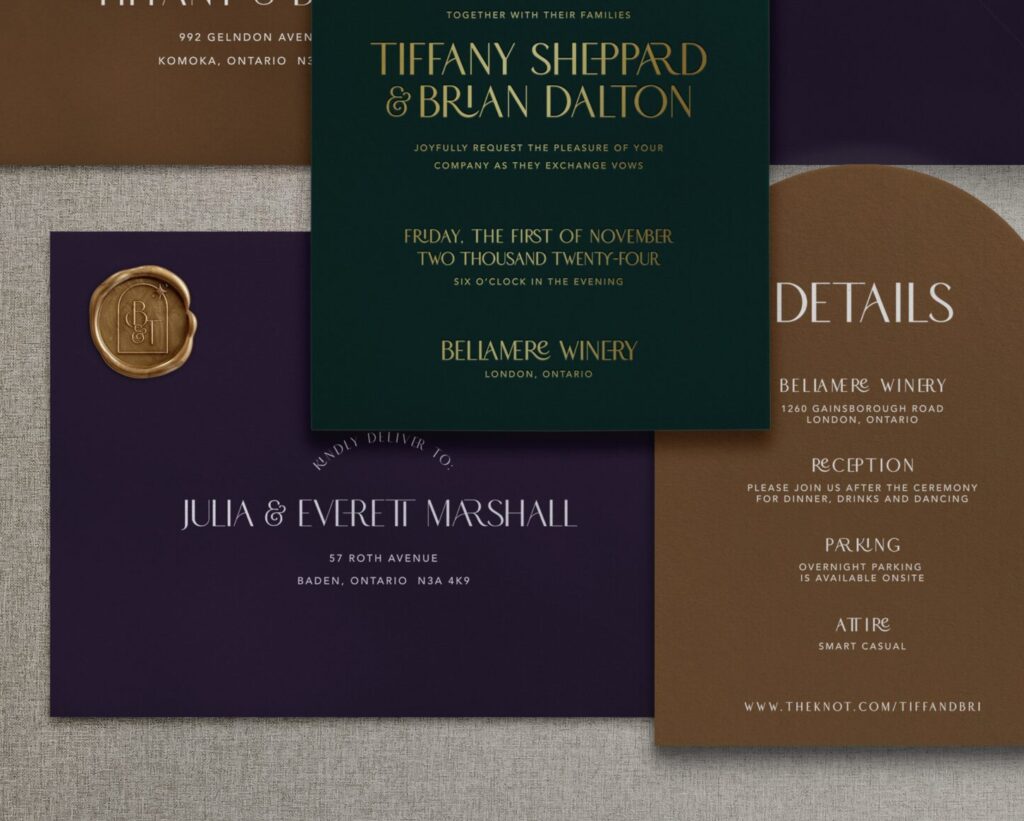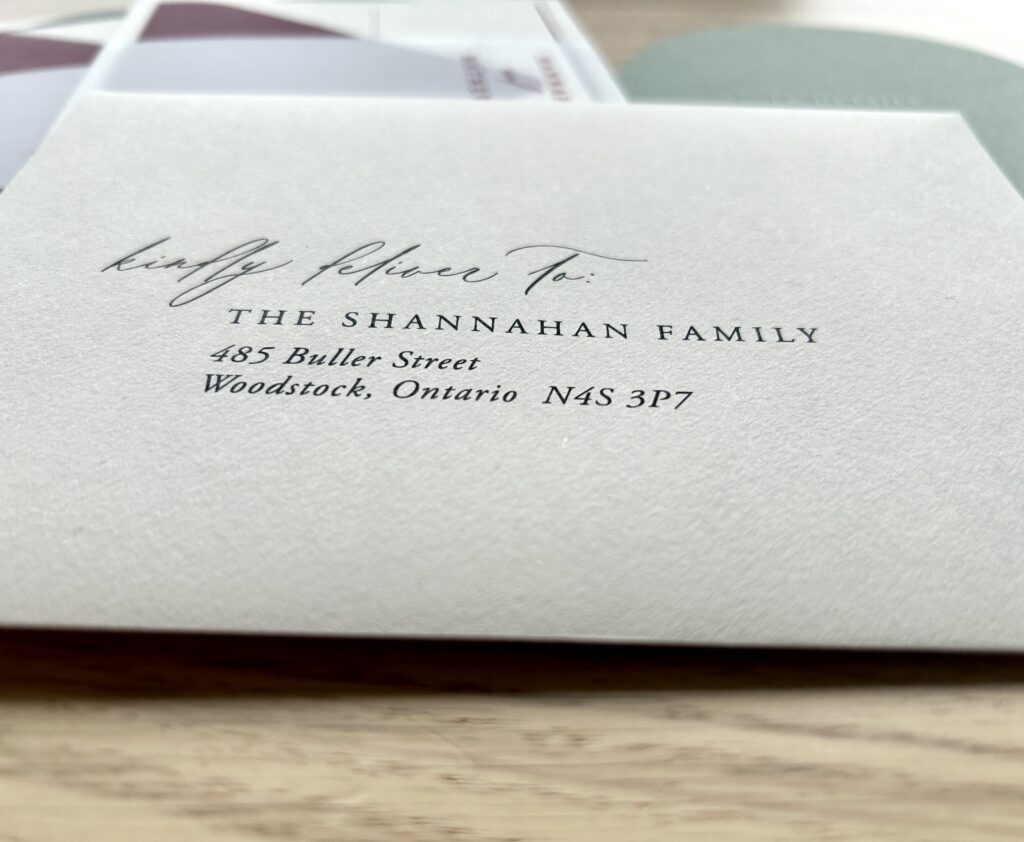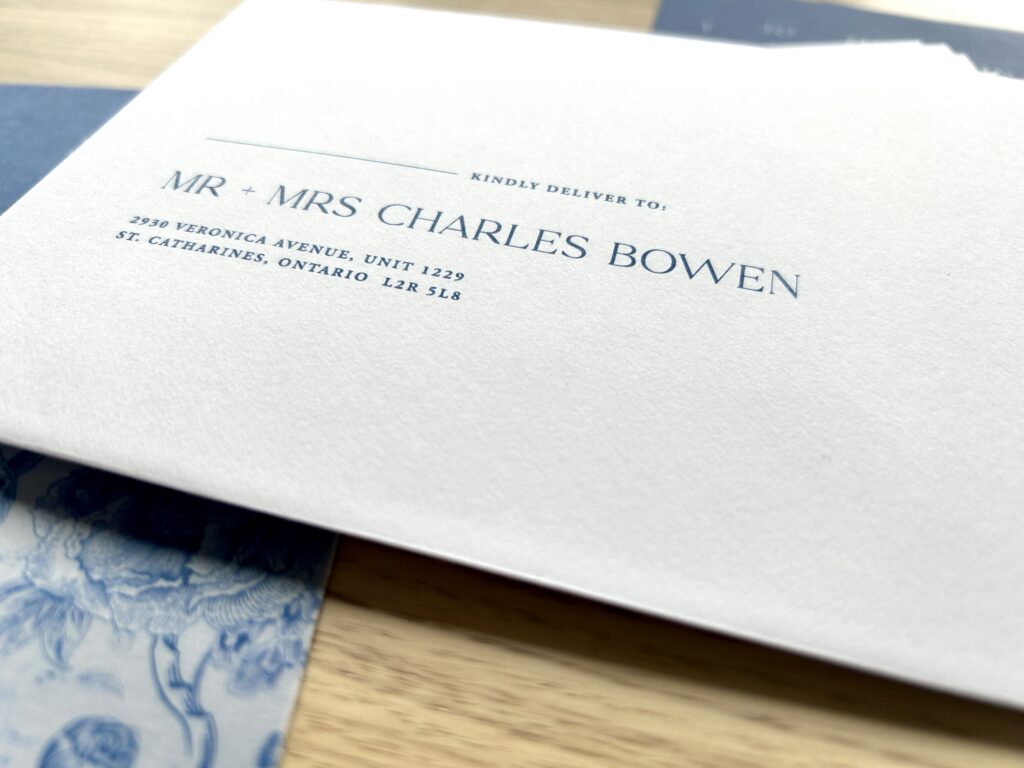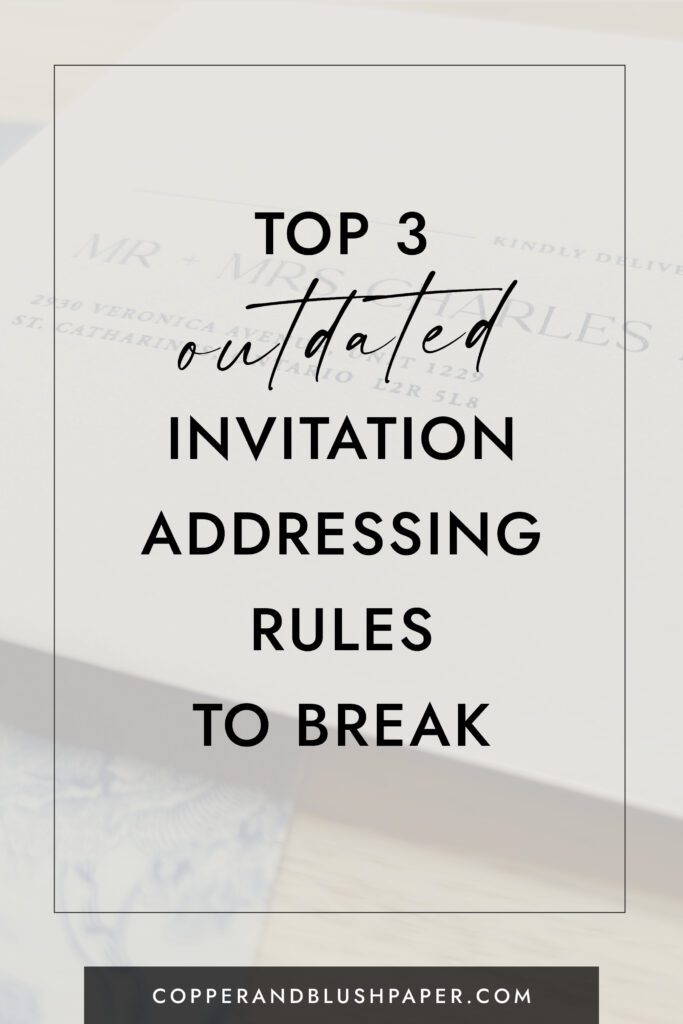Stepping into the future means shaking things up a bit, especially when it comes to wedding invitation addressing etiquette. While tradition has its charm, modern weddings should celebrate diversity, personal flair, and making everyone feel included.
Today, we’re diving into three invitation addressing rules that are ready to take a backseat in 2024. From waving goodbye to gender-specific language to giving formal titles a makeover and tackling the plus-one puzzle, let’s embrace a more personalized and inviting approach to wedding invitations.
So, grab your favorite drink, get comfy, and let’s explore the world of modern wedding etiquette! And don’t worry, even though we’re diving into some important topics, I’ll try to keep the vibe light and breezy!

Gender-Specific Language in Invitation Addressing
When it comes to wedding invitation addressing, steering clear of gender-specific language is key, and not just because it’s a bit outdated. It’s all about embracing the beautiful tapestry of relationships and family setups we have today.
Using a style like “Mr. and Mrs. John Smith” might not capture the full picture of who’s celebrating with us, especially in our wonderfully diverse world! I don’t know a lot of women who would prefer their name is not even mentioned on their invitation.
Using inclusive language gives everyone the equality, respect, and acceptance they deserve.
This style also excludes same-sex couples and non-binary individuals, as the etiquette assumes there’s one man and one woman involved. When couples don’t fall into this binary, adjustments have to be made to ensure both people are acknowledged properly and as they prefer.
When we swap out gender-specific language for more inclusive terms in wedding invitations, we’re giving everyone the equality, respect, and acceptance they deserve. The vibe becomes welcoming and inclusive, making sure every guest feels right at home and celebrated for who they are.
Instead, of the standard “Mr. and Mrs. John Smith,” you can choose to address your guests with their individual full names and titles, like “Mr. John Smith and Mrs. Jane Smith” or by simply using their names without titles, like “John Smith and Jane Smith” or “John and Jane Smith.”

Formal Titles and Wording in Your Invitation Addresses
Although some traditional couples and families might prefer their invitations in a super formal addressing style, it is absolutely not required (or even recommended in all cases).
Some of the main issues are that formal language can be very rigid and feel impersonal or outdated. It may not align with your personal style or, importantly, the vibe and tone of your wedding. Opting for a more flexible or informal approach that considers the overall tone of the event can result in invitations that feel more personalized and inclusive.
As an example, if you’re going for an ultra-formal white tie wedding, it would be fitting to use ultra-formal addressing that follows all etiquette rules to a tee.
But if you’re a more laid back couple, or your event is a semi-formal affair, you can loosen up on the rules and take a more personal approach. Addressing your invitations with just your guests’ first names makes them feel more approachable.
Mandatory Plus-Ones for Your Wedding Invitations
Formal etiquette states that all single guests invited to your wedding should be given the option of bringing a date. But that is just not necessary or appropriate anymore.
Logistically speaking, you probably won’t want to add an additional 50+ guests to your list, just because etiquette calls for it. Those people are costing you money and eating up your budget that could be spent on adding a nice steak to your meal options or getting that gorgeous welcome sign you’ve been eyeing.
And when it comes to the vibe of your day, do you really want to share it with a bunch of random Tinder dates your 20-something cousins picked up? Or your weird uncle’s best friend? By narrowing your guest list and skipping plus-ones for most single guests, you’re guaranteeing a more personal, intimate group of people you know and love.
need more guest list help?
Subscribe for access to my wedding planning resource library, including a guest list workbook & gift tracker to make this even easier.
3 Things to Keep Doing with Your Invitation Addressing
Including some plus-ones
Okay, I know I just said that mandatory plus-ones are not necessary. And I stand by that! But that’s not to say you should offer no plus-ones. I’m just saying you don’t have to give them out like candy. Try narrowing the plus-ones to people who you think won’t know many people there, or to only your closest friends and family.
Using special titles
Some people are picky. And some just simply demand you respect their special titles. If you’re inviting a doctor, a judge, military personnel or a religious leader, be sure to find out from them what their preference is for their distinguished title. Even if you’re using an informal addressing style, you *still* might want to use these, if your guest is particular.
Keeping things consistent
We just talked about having to make adjustments to invitation addressing to accommodate your diverse group of guests. But it’s important, still, to be as consistent as possible across the board. So that means, if one guest’s invitation is addressed formally, all should be. And if you opt for casual language for one guest, that should be applied to the rest as well.

In wrapping up, embracing modernity in wedding invitation addressing can add a touch of personalization and inclusivity to your big day. By breaking free from outdated rules like gender-specific language, rigid formalities, and mandatory plus-ones, you’re creating an environment that reflects your unique style and celebrates the diversity of your guests.
While we still tip our hats to a few etiquette guidelines, taking a more relaxed approach can lead to invitations that feel welcoming and intimate, setting the perfect tone for your day.
So, as you navigate the exciting journey of wedding planning, remember to prioritize what feels right for you and your loved ones, making your celebration truly unforgettable. Cheers to breaking the rules and crafting a wedding that’s authentically yours!

hey! i’m gillian!
Paper person. Jeopardy nerd. Magpie [hoarder of shiny things].
Most people call me Gill (like Jack ‘n). I’m the owner/designer/maker here at Copper + Blush. Making stunning foil stationery you will absolutely love is totally my cup of tea.
When I’m not working away in my home studio, I’m most likely picking up (yet another) new hobby or snuggling up with my hilarious husband on our comfy couch.
Looking for a designer for your wedding stationery? Check out more about what we can create together!
Don’t forget to Pin it!

